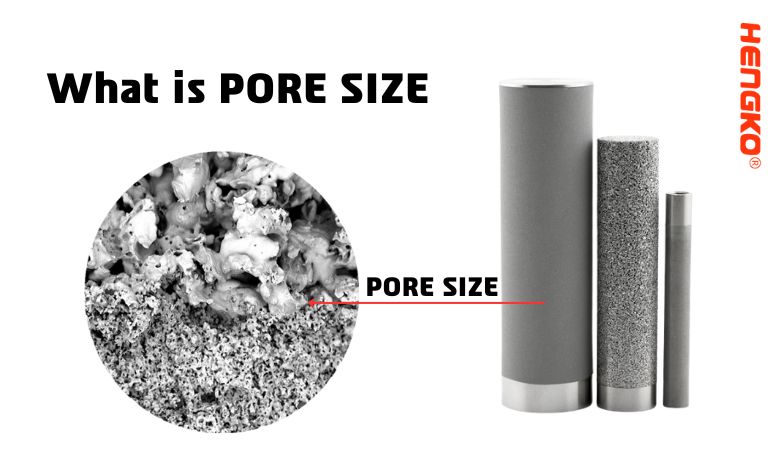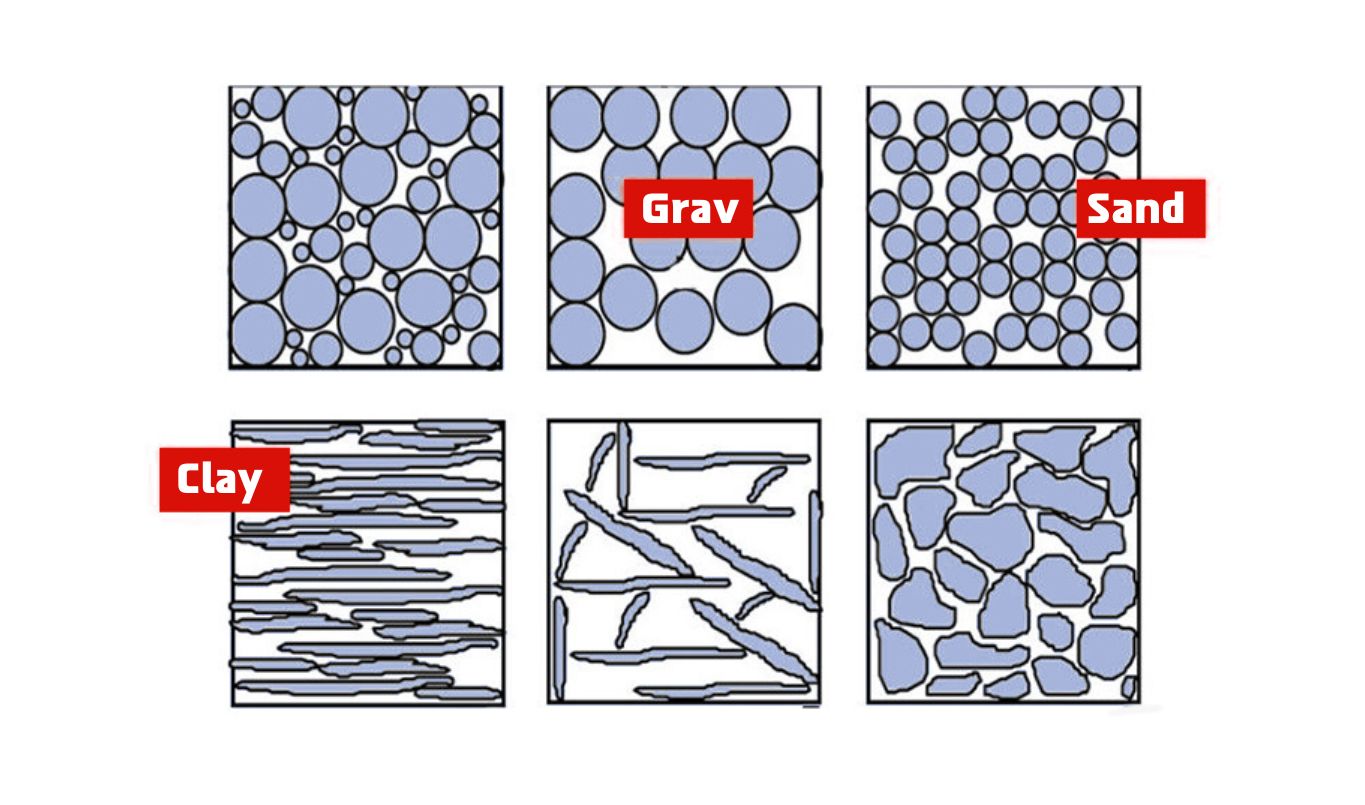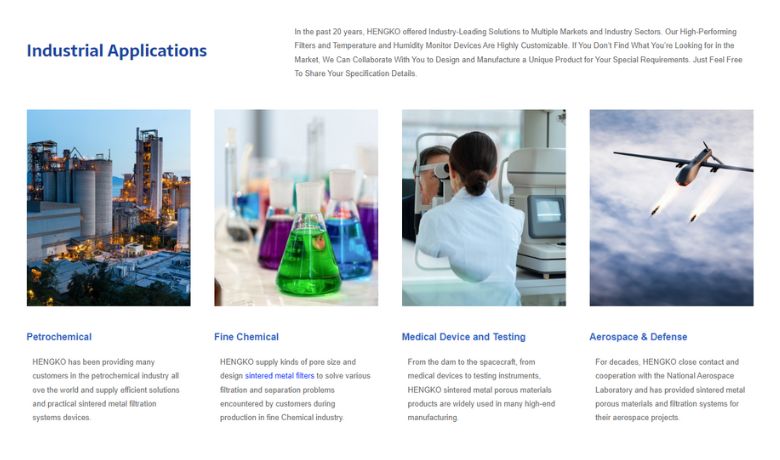
Hey there, skin enthusiasts! Today, we're diving into the topic of pore size, and why it's so important to understand. You may have heard about pores before, but do you really know why the pore size is so important? Keep reading to find out!
What are pores?
In the context of filter elements, pores are small openings or channels within the filter material that allow for the passage of fluids or gases while trapping solid particles or contaminants.
Filter elements are designed to remove impurities and contaminants from fluids or gases, and the effectiveness of the filter is determined in large part by the size and distribution of the pores within the filter material.
Pore size is typically measured in microns, with smaller pore sizes indicating a greater ability to filter out smaller particles. However, a filter with extremely small pore sizes may also have a lower flow rate, which can impact its overall efficiency.
Different types of filter elements may use a variety of materials and pore structures to achieve specific filtration goals, such as removing particles of a certain size or separating different types of liquids. Common filter materials include cellulose, polypropylene, and various types of membranes or mesh.
What is pore size?
Now that we know what pores are, let's talk about their size. Pore size refers to the diameter of the opening in the skin. Pores can range in size from less than 0.2 micrometers to more than 0.5 millimeters. That's quite a range! Pore size can be measured using a special device called a poreometer, which uses a camera and software to analyze the skin's surface.
Why is pore size important for industry filtration system?
Pore size is an important consideration for industry filtration systems because it determines what types of particles and contaminants can be effectively removed from a liquid or gas stream. The size of the pores in a filter determines the maximum size of particles that can pass through it.
If the pore size is too large, particles and contaminants may pass through the filter and remain in the final product. Conversely, if the pore size is too small, the filter may become clogged or fouled too quickly, reducing its effectiveness and requiring more frequent maintenance or replacement.
Therefore, selecting the appropriate pore size for a filtration system is crucial in ensuring that the desired level of purity and cleanliness is achieved in the final product. The pore size must be chosen based on the specific application, taking into account the size and type of particles to be removed, the flow rate of the liquid or gas, and other relevant factors.
So actually, for many industry , special filter system, most are need elements with diffterent pore size, then help us to filter some impurities from our materials.
How to OEM pore size for porous filter elements ?
OEM (Original Equipment Manufacturer) pore size for porous filter elements typically involves customizing the pore size of the filter to meet the specific needs of a particular application or industry. The following steps may be taken to OEM pore size for porous filter elements:
Determine the specific requirements:
The first step in OEM pore size for porous filter elements is to determine the specific requirements of the application, including the size and type of particles to be removed, the flow rate, and any other relevant factors.
Select the appropriate material:
The material used to create the filter element can impact its pore size. Select a material that can be customized to achieve the desired pore size.
Customize the manufacturing process:
Depending on the manufacturing process used, the pore size of the filter element may be customizable. Manufacturers may use different techniques such as sintering, etching, or chemical vapor deposition to achieve the desired pore size.
Test the filter element:
Once the filter element has been customized to achieve the desired pore size, it should be tested to ensure it meets the required specifications. This may involve testing for particle removal efficiency, pressure drop, and other factors.
Optimize the pore size:
Based on the testing results, the pore size may need to be further optimized to achieve the desired level of filtration efficiency and flow rate.
Overall, OEM pore size for porous filter elements requires careful consideration of the specific application and manufacturing processes to achieve the desired level of filtration efficiency and product performance. It is important to work with a reputable manufacturer with expertise in custom filter element manufacturing to ensure the best results.

what kind of pore shape is better for filter?
The most effective pore shape for a filter depends on the specific application and the particles being filtered. Generally, the shape of the pores should be able to efficiently capture and retain the particles while allowing for an adequate flow of fluid or gas.
For example, in microfiltration applications where the goal is to remove particles larger than 0.1 microns, asymmetric pore shapes like tapered or conical pores are more effective because they can create a tortuous path that increases the chance of particle capture.
On the other hand, in nanofiltration applications where the goal is to remove particles smaller than 0.001 microns, cylindrical or straight-sided pores are more effective because they allow for a higher flow rate and less particle accumulation.
Ultimately, the most effective pore shape will depend on the specific requirements of the filtration application and the size and type of particles being filtered.
Porous Metal Filter is Better or PE Filters ?
Whether a porous metal filter or a PE (polyethylene) filter is better depends on the specific application requirements and the properties of the materials being filtered. Here are some key factors to consider when choosing between porous metal filters and PE filters:
Chemical compatibility:
Porous metal filters are generally more chemically resistant than PE filters, making them better suited for filtering aggressive or corrosive chemicals. However, PE filters can be made with various grades of polyethylene to enhance their chemical compatibility.
Temperature resistance:
Porous metal filters can withstand high temperatures better than PE filters, which may soften or deform at elevated temperatures. This makes porous metal filters a better choice for applications that involve high-temperature liquids or gases.
Mechanical strength:
Porous metal filters are generally stronger and more durable than PE filters, making them better suited for applications that require high-pressure filtration or filtration of abrasive materials.
Filtration efficiency:
PE filters can have a higher filtration efficiency for certain applications, as they can be made with smaller pore sizes than porous metal filters. However, porous metal filters can be customized to have specific pore sizes and geometries to achieve the desired filtration efficiency.
Cost:
Porous metal filters are typically more expensive than PE filters, especially for custom designs or small production runs. PE filters, on the other hand, are more cost-effective and widely available.
In summary, both porous metal filters and PE filters have their advantages and disadvantages depending on the specific application requirements. It is important to carefully consider the chemical compatibility, temperature resistance, mechanical strength, filtration efficiency, and cost when choosing between the two.
Application of porous filters ? Metal Sintered Filters ?
Porous filters are used in a wide range of applications where fluid or gas needs to be filtered to remove contaminants or particles. Here are some common applications of porous filters:
Water treatment:
Porous filters are commonly used in water treatment systems to remove impurities such as sediment, bacteria, and viruses. They can be used in a variety of settings including municipal water treatment plants, residential water filtration systems, and point-of-use filtration devices.
Chemical processing: Porous filters are used in chemical processing applications to remove contaminants or impurities from fluids and gases. This includes applications such as solvent filtration, catalyst recovery, and gas purification.
Food and beverage:
Porous filters are used in the food and beverage industry to remove contaminants, bacteria, and other impurities from liquids such as juices, beer, and wine.
Pharmaceutical and biotechnology: Porous filters are used in the pharmaceutical and biotechnology industries to sterilize fluids and gases, filter out particles, and separate proteins and other biomolecules.
Automotive and aerospace:
Porous filters are used in the automotive and aerospace industries for applications such as engine air intake filters and cabin air filters.
Metal sintered filters are a specific type of porous filter made from metal powder that has been sintered (heated and compressed) to create a solid material with interconnected pores. Here are some common applications of metal sintered filters:
Oil and gas:
Metal sintered filters are commonly used in the oil and gas industry to remove contaminants and impurities from fluids such as crude oil, natural gas, and hydraulic fluids.
Aerospace:
Metal sintered filters are used in aerospace applications such as fuel filtration, hydraulic system filtration, and air filtration.
Medical devices: Metal sintered filters are used in medical devices such as ventilators and oxygen concentrators to filter out particles and bacteria.
Industrial filtration: Metal sintered filters are used in various industrial filtration applications such as water treatment, chemical processing, and wastewater treatment.
Automotive:
Metal sintered filters are used in automotive applications such as fuel filtration and oil filtration.
So for pore size known by more and more people and also more filter system use the sintered metal fitlers because of better pore size structure.
Know more details about the pore size, please feel free to contact us by email ka@hengko.com, we will send it back within 48-hours.
Post time: Mar-02-2023





